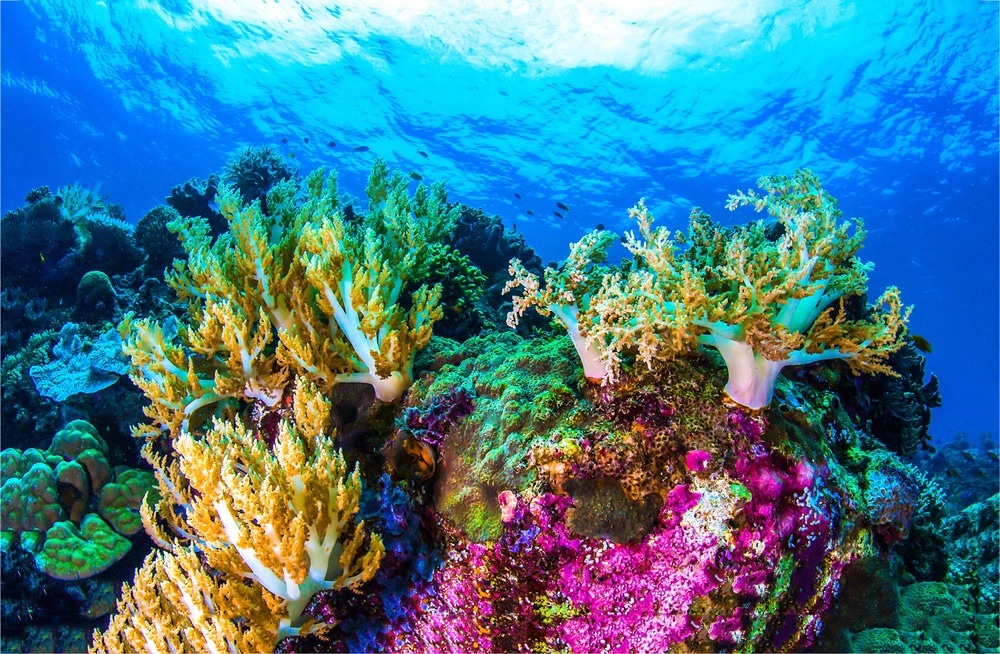Coral reefs are one of the world’s most diverse ecosystems; they are vital to local economies and in protecting coastlines.

Image Credit: Irina Markova/Shutterstock.com
Coral reefs are also, unfortunately, under severe threat due to a myriad of causes, including unsustainable fishing practices, pollution, and global warming - all of which are caused by human activities. Thankfully, scientists are developing cutting-edge nanotechnology that may save them. Here, we explore how these nanotechnology-based systems work and why their work in protecting coral reefs is vital to the Earth.
Why Are Coral Reefs Important?
Coral reefs are teeming with life and are home to around 4,000 species of mollusc, 1,500 species of fish, 400 species of coral, and even six of the seven sea turtle species. Located in the western Pacific Ocean, the Coral Triangle is the most diverse and biologically complex marine ecosystem on Earth.
As well as being home to much of the world’s marine life, coral reefs provide important protection to coastlines - protecting them from the natural power of the waves against the coast and extreme weather such as tsunamis. They also drive local ecosystems by providing jobs and tourism opportunities.
Finally, coral reefs have been coined ‘the medicine cabinets of the 21st century’ due to the wealth of animal and plant sources that inhabit the reef. Scientists are hoping to develop novel treatments using these natural resources for a whole range of illnesses like Alzheimer's disease, arthritis, asthma, bacterial infections, cancer, heart disease, viruses, and more.
Current Threats to Coral Reefs
Global climate change, land-based pollution, and unsustainable fishing practices are the biggest threats to coral reefs. In addition, these ecosystems face the challenges presented by tropical storms, outbreaks of disease, marine debris and invasive species. The troubles caused by each of these sources of threat accumulate and exacerbate the impact of one another.
Climate change is causing surface sea temperatures to rise, which causes coral bleaching and also leads to disease, extreme weather, and increases in sea level. Additionally, the increased carbon dioxide in the ocean due to climate change is altering the chemistry of the water, further harming the coral.
Unsustainable fishing practices taking place around coral reefs can result in a loss of biodiversity, which has a ripple effect on the aquatic ecosystem the coral reef supports as well as the local economies that they support.
Land-based sources of pollution also present an immediate threat to coral reefs. Pollution introduced to the land from agricultural practices and coastal development projects can hinder coral growth and reproduction as well as cause disease and disturb ecological function.
How Nanotechnology is Helping to Protect Our Coral Reefs
In recent years, scientists have worked on developing innovative systems to protect and re-establish coral reef ecosystems. One emerging method leverages nanotechnology to create an artificial reef, which can be used to restore areas of natural reefs that have been destroyed by overfishing, bleaching, acidification, and hurricanes.
The Reef Life Foundation has developed its system, known as IntelliReefs, that is precisely engineered to encourage biodiversity through a substrate called Oceanite, a complex matrix of minerals that was constructed following 20 years of nanomaterials expertise.
The artificial reefs created with Oceanite mimic the sites they are intended to fit into. Oceanite is customizable, allowing mineral compounds to be adjusted to accommodate the species and function of individual reefs, ensuring that they support the unique ecosystems of the artificial reefs that they are intended for. In addition, Oceanite is an incredibly porous material that is designed to optimize animal settlement onto the reef by maximizing the surface area to volume ratio.
Scientists are also able to use Oceanite to create elaborate architectural designs that accomplish function-specific objectives. The material’s strength also helps it to endure harsh aquatic conditions, such as storms.
Other teams of scientists have leveraged nanotechnology in a different way to protect coral reefs. A recent study from the University of Wisconsin–Madison saw physicists observe reef-forming corals at the nanoscale, allowing them to identify how their skeletons are formed. In the study, a spectromicroscopy technique was used to probe the coral’s growing skeletons. This method helped scientists develop an explanation of how corals can resist the acidifying oceans resulting from global warming.
This information has provided vital insights into how to protect coral reefs from the devastating effects of climate change. The study concluded that controlling water temperature, rather than acidity, is a better strategy for protecting against coral loss and restoring reefs.
This study highlights the importance of collecting data at the nanoscale as it can often provide insights that cannot be garnered from traditional microscopic investigations. Nanoscale investigations will not only be important to coral reef restoration, but many other fields of science will likely benefit.
In the future, it is likely that nanotechnology will continue to be leveraged to help protect and restore coral reefs. As the field of nanotechnology matures, we will be able to take advantage of advanced capabilities in order to better understand aquatic ecosystems and design innovative strategies to protect them.
References and Further Reading
A better understanding of coral skeleton growth suggests ways to restore reefs. [Online]. National Nanotechnology Initiative. Available at: https://www.nano.gov/node/3421
IntelliReefs: Coral Restoration Nano Tech. [Online]. Reef Life Foundation. Available at: https://www.reeflifefoundation.org/post/intellireefs-coral-restoration-nano-tech
Katie Pavid, (2018) Why the Coral Triangle is the most important part of the ocean. [Online]. Natural History Museum. Available at: https://www.nhm.ac.uk/discover/news/2018/march/why-the-coral-triangle-is-the-most-important-part-of-the-ocean.html
Nanotechnology and saving coral reefs. [Online]. ABC. Available at: https://www.abc.net.au/radionational/programs/bigideas/big-solutions-on-the-nano-scale/13659508
Sarah Perdue, (2020) A better understanding of coral skeleton growth suggests ways to restore reefs. [Online]. University of Wisconsin-Madison. Available at: https://news.wisc.edu/a-better-understanding-of-coral-skeleton-growth-suggests-ways-to-restore-reefs/
Wali, A.F. et al. (2019) Natural products against cancer: Review on phytochemicals from marine sources in preventing cancer. Saudi Pharmaceutical Journal, 27(6), pp. 767–777. https://doi.org/10.1016/j.jsps.2019.04.013.
Disclaimer: The views expressed here are those of the author expressed in their private capacity and do not necessarily represent the views of AZoM.com Limited T/A AZoNetwork the owner and operator of this website. This disclaimer forms part of the Terms and conditions of use of this website.